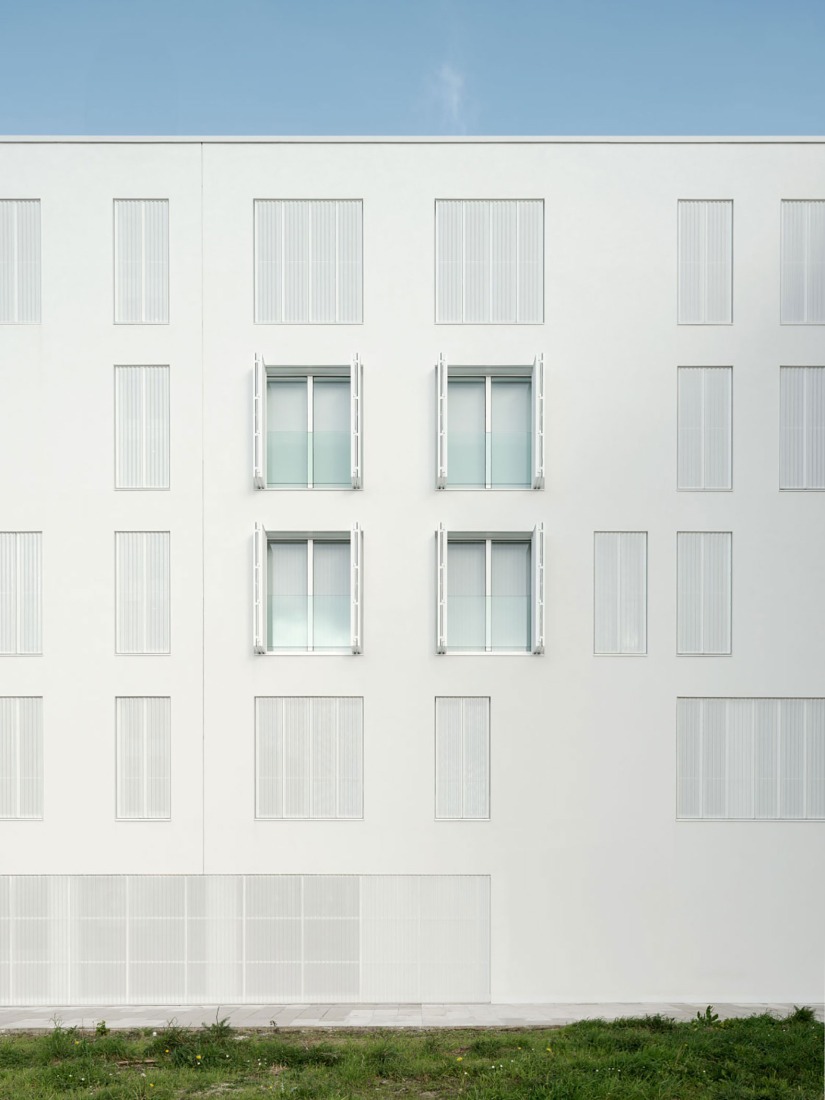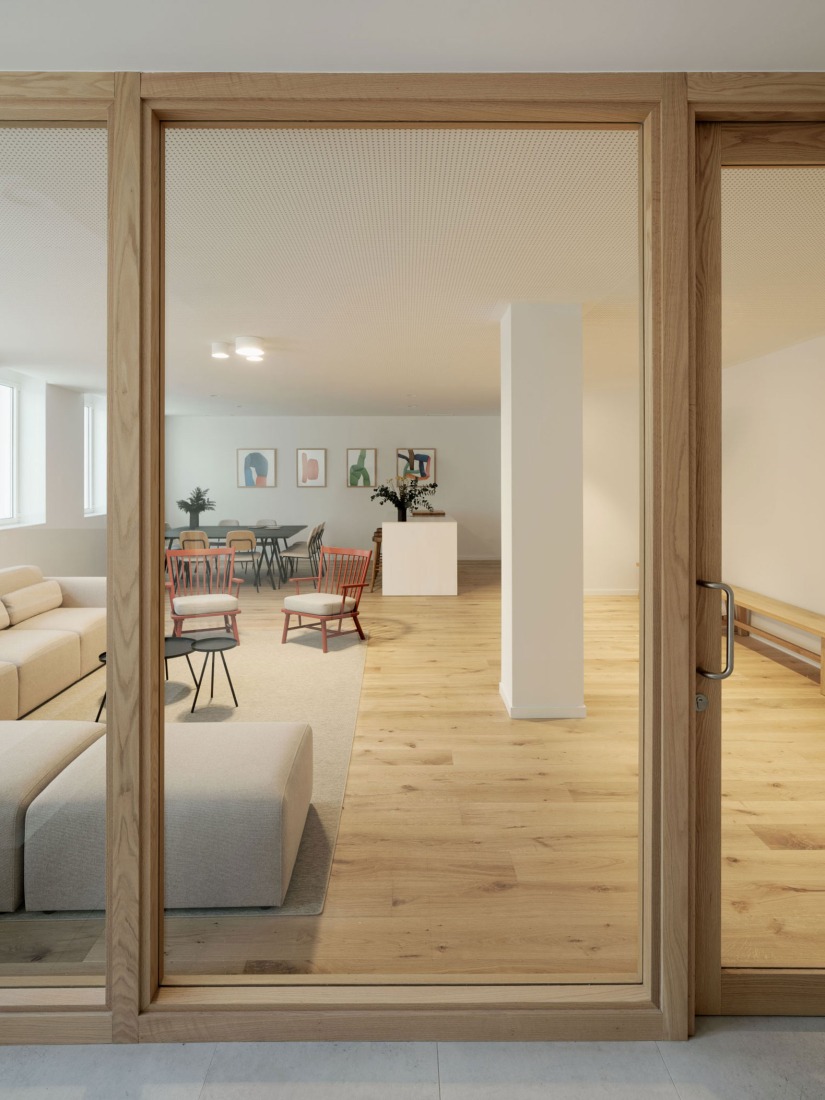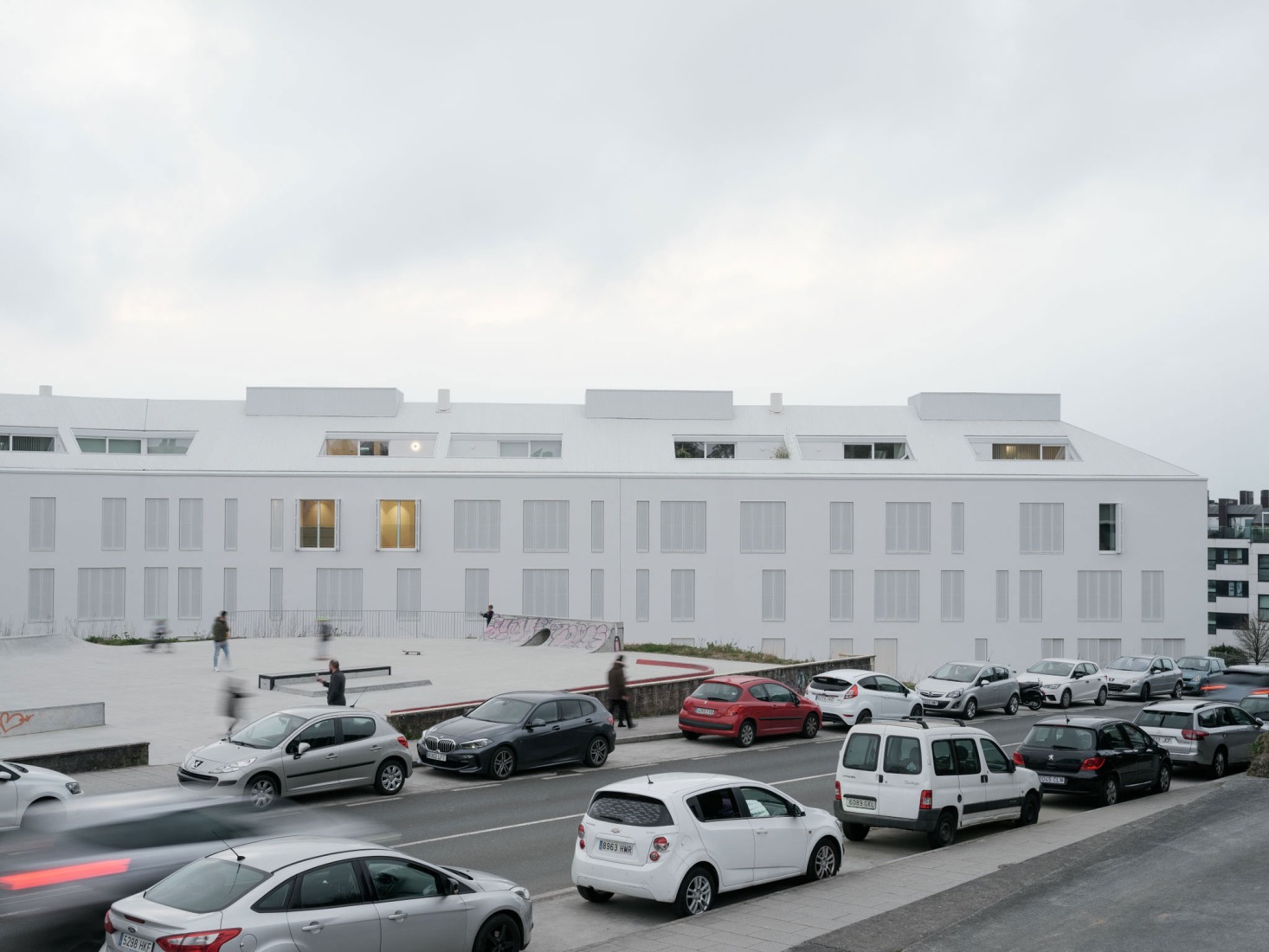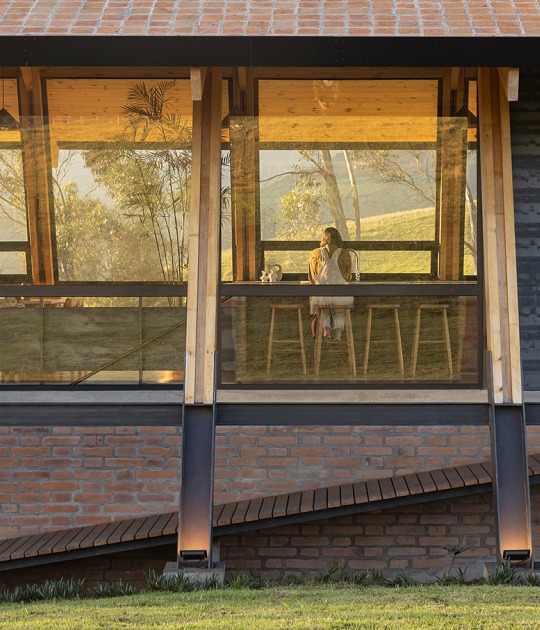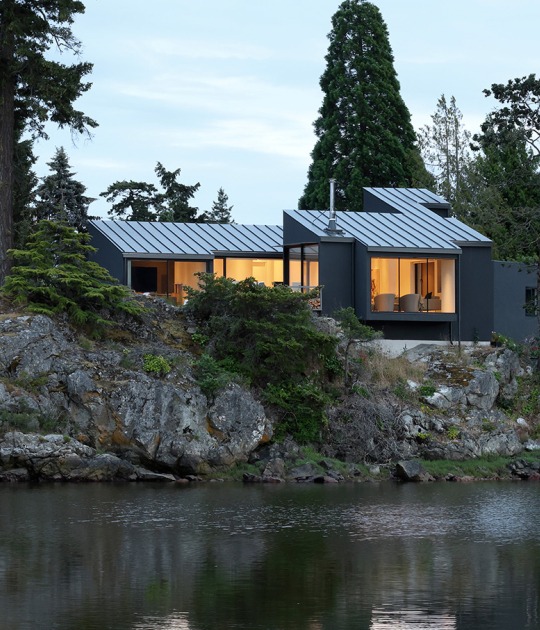
The distribution of the homes designed by Carbajo Barrios is marked by the participation of the group of owners, since due to the promotion of the work through a cooperative, the project presents a careful relationship between the different spaces that make up the block. The building, developed in the form of an open linear block, has two different types of housing.
The public routes and entrances of the building are grouped in a large double-height corridor that enriches the spatial experience.

Alto Residencial Coop by Carbajo Barrios. Photograph by Luís Díaz Díaz.
The building resolves the unevenness of the plot, turning the building into a containment element that marks the limits of the public space.
The designed homes take advantage of the gaps in the façade as an opportunity for interaction with the environment. Therefore, in addition to offering natural ventilation and lighting, they function as a filter that generates different levels of privacy and solar protection through the external superposition of a practicable perforated sheet metal counter.

Alto Residencial Coop by Carbajo Barrios. Photograph by Luís Díaz Díaz.
Project description by Carbajo Barrios
Schedule
The project foresees the construction of 34 dwellings in an open building promoted by a group of owners constituted as a cooperative, enabling their active participation in formal and programmatic decision-making. This way of associating reduces construction costs (by eliminating the promoter’s profit), democratises decision-making and generates a sense of belonging for future coexistence and interaction in the built space.
Situation
The building sits on one of the last vacant plots of a residential area that, in the 1990s, came about from the development of the area around the Ermita de Santa Marta, next to Monte de Conxo, on the edge of the consolidated urban land of Santiago de Compostela. In the current urban planning proposed for this area, the residential buildings are developed in open U-shaped blocks embracing interior courtyards for private use, except for the eastern flank of the sector (where this plot is located), which is adapted to the existing low-density building grid, where a series of buildings are planned in open block typology of linear and sinuous form that crown the highest part of the chosen plot, also serving to resolve the existing slopes, turning the building into an element of containment between different elements of the public space.

Project
The building is volumetrically shaped by taking up the elements that configure the site: a linear element, edge and limit, materialised as a continuous volume in whose envelope different textures can be recognised: a perforated sheet metal linked to the openings, which serves as a transition between exterior and interior, and another solid one, with continuous white cladding. All of this culminates in a sloping roof that reinforces the typological image of the complex and is materialised in accordance with the metallic cladding of the façade openings.
Access to all the dwellings from the street is from a single point, through a large double-height corridor that centralize all routes, serves as a common vestibule for the five interior communication portals and leads to the community space situated at the end of the corridor with access to the more secluded public space on the opposite side of the plot.
Designed for a flexible configuration, the openings appear on the façade as elements of interaction between the home and its surroundings. In addition to the traditional function of lighting and ventilation, a filtering function is added with the exterior superimposition of a perforated sheet metal partition which, allowing light and air to enter, qualifies the relationship between the interior and exterior, generating varying degrees of privacy and establishing a barrier to the incidence of sunlight, with the consequent gradation of the interior temperature of the dwellings at different times of the year.





